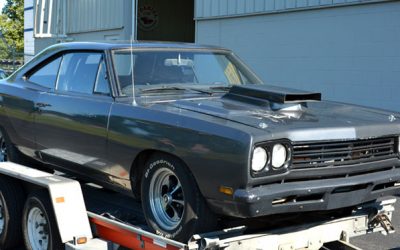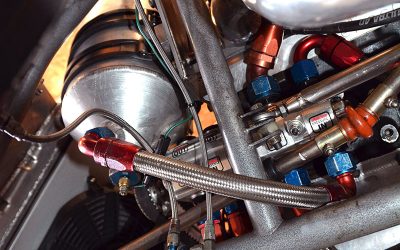by Mike Tontimonia
So this is the west, the Rockies, the remote, high-country where majestic bull elk bugle at summer’s end, where graceful eagles soar on rising mountain thermals, and where colorful wild trout survive and thrive in hidden streams and in postcard lakes. For years I had wanted so badly to visit this land, dreamed about it, read about it, and wondered about it. And now I knew why.
 Sixteen-year-old Brad Dobina, one of our party, put it best.
Sixteen-year-old Brad Dobina, one of our party, put it best.
“Awesome,†he said, a single word that summed up our collective feelings perfectly.
We had ridden for hours during the heat of the July day, moving steadily higher, past Army Mule Saddle and Lost Knife Meadow, forest landmarks named for significant happenings in year gone by, through dense lodge pole pines and ghostly gray snags of burned old growth cedar, markers of lightning caused fires that periodically engulf and enrich this land. The last mile or so was even steeper, a tricky, boulder-strewn trail that switched back and forth like a wilderness staircase on it’s way to the summit of historic McConnell Mountain.
The view from McConnell is spectacular. No, it’s even better than that. It’s awesome times two.
Steep, jagged peaks jutting like granite saw blades from the rich green slopes of dense pine, fir, and cedar forests, reaching to the edges of the horizon, touching the edge of the big sky, reaching perhaps, to the invisible seam between then and now. Then being a time long ago when the region’s first trappers and prospectors looked across the nation’s spine and now, right now, as we looked across the same twisted peaks and shadowed ridges. The view is indeed awesome, just as it is awe-inspiring. The backcountry of Idaho’s Selway-Bitterroot Wilderness stretches out in every direction. To the east, the wandering range of the Bitterroots mark the Montana line and to the west, the snow caps of the Washington State Rockies show themselves against the darkening sky of evening.
It’s hard to get enough of such a sight, but easy to wonder aloud just who might have felt the tingling inspiration of the same view. Surely, the Nez Perce who traveled this way from winter camps to summer buffalo fields did. Lewis and Clark too, looked across this same high country expanse as they explored their way west. And just as surely each and every forest service worker who tamed the surrounding Clearwater National Forest did too.
End of day charms
But there was work to do; the view would have to wait. Horses to tie and pack mules to unload. A campfire to build and bedrolls to unpack.
We would camp simply this night, like summer travelers of a century ago might have. We spread mantees, packing tarps for the mule loads to eastern greenhorns, then roll out our bedrolls over them. We leave half the mantee out so that when the chill of the mountain night settles, like we know it will, we can cover ourselves with the flap. We use horse blankets to soften the granite and dirt. It’s a great way to sleep, a cowboy way to rest.
 Then the coals of the campfire are settled enough to cook. We fill the iron Dutch oven with foil packages, each a meal of stuffed chops and vegetables. The oven settles into the coals and we busy ourselves with other camp chores while the steaming kettle does its work.
Then the coals of the campfire are settled enough to cook. We fill the iron Dutch oven with foil packages, each a meal of stuffed chops and vegetables. The oven settles into the coals and we busy ourselves with other camp chores while the steaming kettle does its work.
A twilight, we open the packages and devour the meal we’ve traveled so far to enjoy. We talk about the day’s journey and plan tomorrow’s route.
John Wilson was our guide when we took the packing challenge back in 1999. The outfitter, Al Latch had sent his best with us, a man comfortable with the remote forest trails, the stock, and the challenges of wilderness travel. Wilson was a full time Idaho cowboy; a one-time bull rider turned horse tamer and trail horse trainer and on lucky weeks, guide of pack animals and their riders. Anything, says Wilson, that keeps him in the saddle and away from a real job.
Around the fire, we sit like those before us have done for generations, in a group but alone in our thoughts, ringing the fire, dodging the pesky smoke and staring into the flickering orange, waiting for bed time, talking some but not too much.
Wilson told a story or two, oral history lessons about the region around us.
Jerry Johnson’s story is a good one. We had loaded the mules and saddled our horses at the Jerry Johnson trailhead, a site were woodsman Johnson, a prospector who loved looking more than finding, built a sturdy winter cabin on the bank of the Lochsa River in the late 1800’s, a base from which he could explore the Clearwater wilderness. A Nez Perce named Isaac had, on his dying day, tried to reveal to Johnson a rich lode of gold that he had found. With his last breath, Isaac vaguely directed his trusted white friend Johnson to the find. Too vaguely. Johnson spent the rest of his years looking but never found the treasure.
To add to the tale, during the very winter, an early and brutal one it was, while Johnson built his permanent log camp and while he would have preferred to be alone, he was visited by the William Carlin party, a guided New York group who had made their way to the site to hunt big game. Hot springs and salt licks attracted wintering animals. The Carlin party was trapped along the Lochsa by the onslaught of winter and a deathly sick camp cook who was finally left to die while the rest of the group desperately made their way to safety.
When finally the fervor of Wilson’s stories and the glow of the fire coals faded we turned to the comfort of our bed rolls, easily falling asleep under the canopy of a million bright stars.
This was a progressive pack trip, the kind that only experienced and well-equipped wilderness hunting guides like Latch can put together. At the time we set off on this trip, he was licenced by the Forest Service to an extremely large hunk of this wonderful Rocky Mountain country and he found that interest in summer trips was growing rapidly. On a progressive trip, camps are moved daily to new locations, all near top fishing spots where native cutthroat trout offer excellent sport.
We rode about four hours each day, setting up a tent camp on most evenings near a tumbling river or high mountain lake. All riding is along established Forest Service trails, some of which are the same trials Jerry Johnson, Nez Perce, and Lewis and Clark used.
Creatures great and small
The Selway Bitterroot is big game country. Black bear, mountain lion, and elk thrive here, summering in the granite alpine high-country. Packers are likely to spot a critter or two during a week of camping but animals are not a problem.
 Now let’s answer some questions. The best way to see this country is on horseback and that means on well-trained, sure-footed backcountry horses and pack mules.
Now let’s answer some questions. The best way to see this country is on horseback and that means on well-trained, sure-footed backcountry horses and pack mules.
The Selway Bitterroot Wilderness was off limits to anything with a motor and that makes travel nearly impossible except by horse. Smart travelers get some basic horse riding training before heading west and they condition themselves for the trip by spending
a few hours in the saddle.
There are no resorts, hot tubs, or bathrooms. Packers take lightweight tents and wash up by heating creek water on the campfire. Latch’s trips included everything but personal gear and a sleeping bag. The ground is hard and it’s best to pack an air mattress for comfort. Layered clothing is the way to go and include a good rain suit.
Trail food is anything but primitive. Because the mules can carry a heavy load, campers can pack quality meals like chicken, steaks, and chops. Latch pre-cooked dinners, froze them, then thawed and heated them in an iron oven.and heats them in his iron oven. All cooking, including flap jacks and egg breakfasts is done over the campfire. It’s wilderness camping at its very best.
All fishing, and indeed it is a great fishery, is for wild, native trout. The region is home to a great population of colorful cutthroat trout, ranging from finger length to well over 12 inches. Fly fishermen can work insect patterns in the pools of tumbling mountain stream for top action or spinning rod fans can toss tiny spinners to the waiting fish. Every stream, creek, and lake holds plenty of cooperative trout. An inflatable fishing tube would add to the fun.
A western pack trip is the ultimate family camping trip. A great time to be together without the distractions so prevalent in today’s world. A time to appreciate the outdoors and to realize the importance of its protection. Our 16-year-old guests would never forget the trip. Never. It was just too awesome.
For more information contact:
Lost Lakes Outfitters; https://www.ohwy.com/id/Idaho Outfitters & Guides Association:




0 Comments